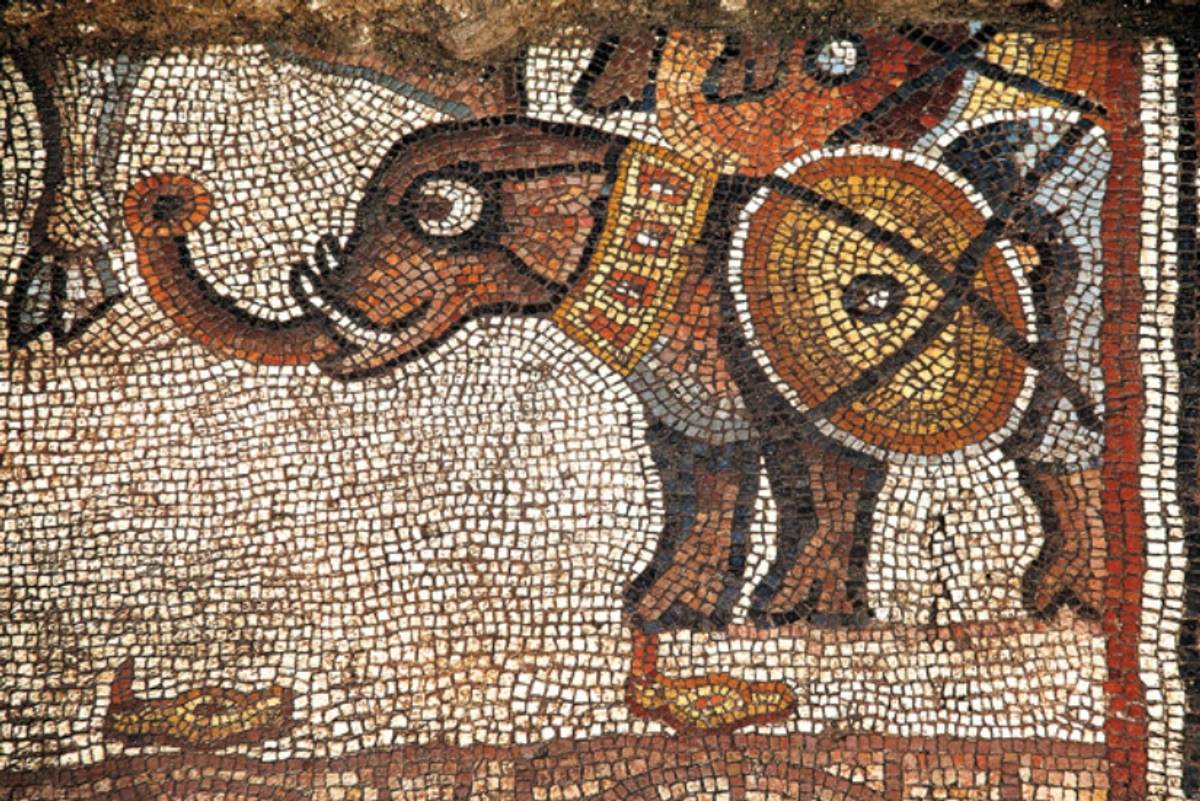
In the ancient Jewish village of Huqoq, located in the Lower Galilee, a set of mosaics that allegedly depict Alexander the Great meeting with a Jewish priest have been unearthed during an excavation of the remains of a synagogue that dates back to the 5th century. If the mosaic has been identified correctly, the discovery will apparently be the first ever depiction of a non-Biblical scene to be found inside a synagogue, the Daily Mail reported on Wednesday.
The team of archaeologists come from the University of North Carolina, Chapel Hill and are led by Arts and Sciences Professor Jodi Magness, and co-directed by the Israel Antiquities Authority. According to a statement on the UNC-Chapel Hill website, Magness’s team has been digging at the ancient synagogue each summer since 2012. In 2013 and 2014, the team across a mosaic in the synagogue’s that
depicts three horizontal registers (strips) containing human and animal figures, including elephants. The top register, which is the largest, shows a meeting between two men, who perhaps are intended to represent Alexander the Great and a Jewish high priest. It was the first time a non-biblical story had been found decorating any ancient synagogue.
This summer they’ve uncovered additional portions of the mosaic. The new digging, which adds to “a Hebrew dedicatory inscription that was uncovered in 2012,” revealed that these inscriptions were in the center of a large panel, featuring
human figures, animals and mythological creatures arranged symmetrically around it, Magness said. These include winged putti (cupids) holding roundels (circular discs) with theater masks, muscular male figures wearing trousers who support a garland, a rooster, and male and female faces in a wreath encircling the inscription. Putti and masks are associated with Dionysos (Bacchus), who was the Greco-Roman god of wine and theater performances, she said.
During the summer 2012 dig a mosaic showing Samson and the foxes, which relates to Judges 15:4 in the bible, was discovered in the synagogue’s east aisle. And a year later a second mosaic showing Samson carrying the gate of Gaza on his shoulders was found. This related to Judges 16:3.
Said Magness, “It is not clear if there is a thematic connection between the Samson scenes and the other mosaics in the east aisle.”
One of the clues that the top mosaic strip portrays Alexander the Great is because the scene includes an elephant. “Battle elephants were associated with Greek armies beginning with Alexander the Great, so this might be a depiction of a Jewish legend about the meeting between Alexander and the Jewish high priest,” Professor Magness said.
Magness added that the mosaic artists probably never saw an elephant in the flesh because, in the mosaic, “they look like cartoons.”
“The images in these mosaics—as well as their high level of artistic quality—and the columns painted with vegetal motifs have never been found in any other ancient synagogue. These are unique discoveries.”
Previous: Ancient Archaeological Site Torched at Israel’s Midburn Festival
King David’s Palace May Have Been Discovered
Mideast Antiques Roadshow
Jas Chana is a former intern at Tablet.